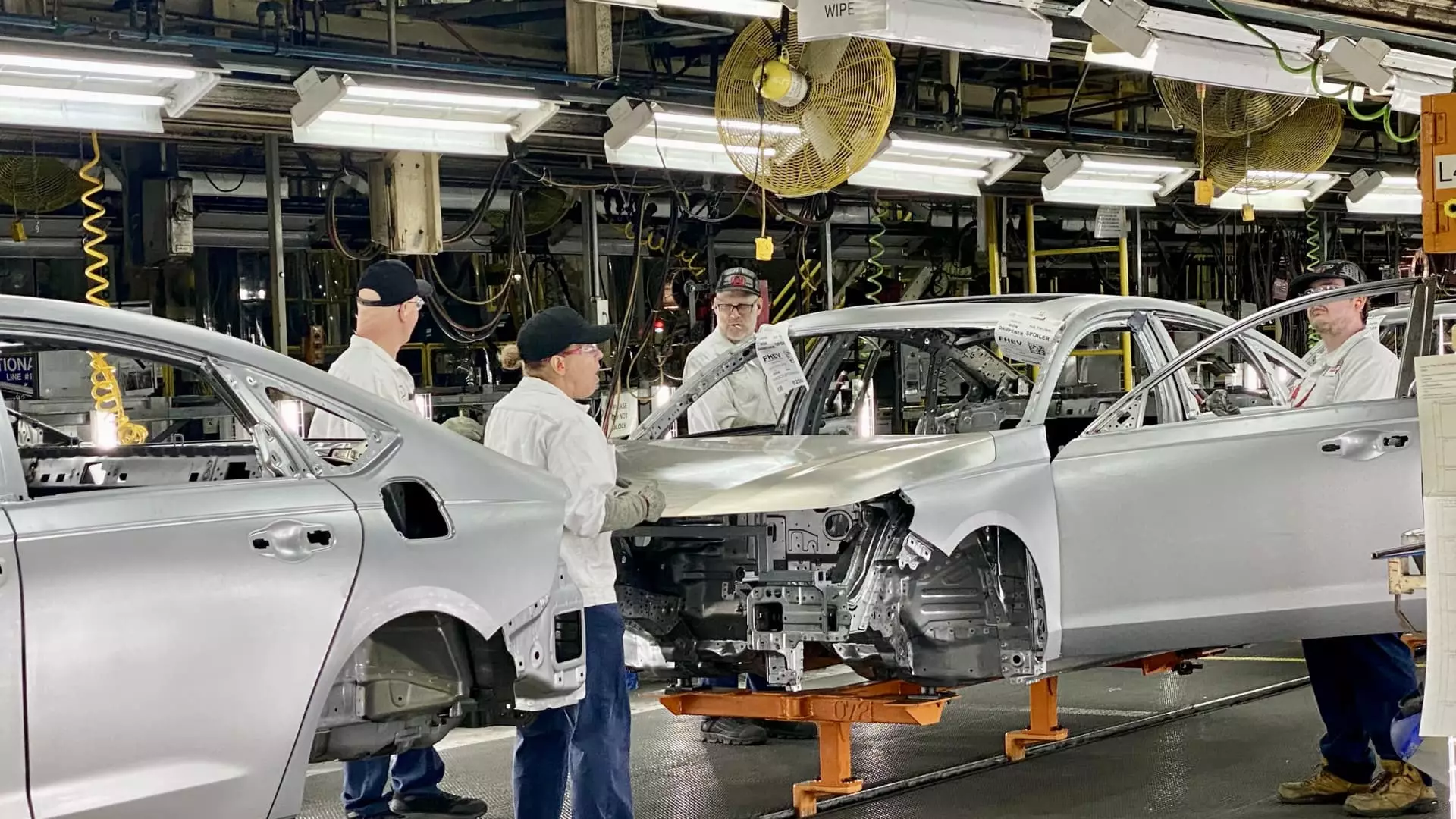Honda Motor Co., a stalwart in the automotive industry for 75 years, is making waves with a dramatic shift in its manufacturing strategy. The notable aspect of this shift is its location—Ohio, a state not typically associated with pioneering automotive advancements. This decision highlights a significant turning point for Honda, aligning with the increasing demand for electric vehicles (EVs) amid a rapidly evolving global market. The company has gone beyond its initial pledge of $700 million, instead committing over $1 billion to modernize and expand its operations, further solidifying Ohio as a crucial hub for its electric vehicle production.
This ambitious investment includes the introduction of six state-of-the-art “giga presses,” following in the footsteps of Tesla’s innovation in automotive manufacturing. These machines possess the capability to produce large automotive components, an approach designed to enhance efficiency and reduce manufacturing complexities. This is part of a larger strategy by Honda to establish an EV-centric manufacturing system that not only caters to the North American market but also serves as a prototype for Honda’s global production framework.
Giga presses represent a monumental shift in how automotive components are constructed. Traditionally, cars require multiple components to be welded together, a process that is time-consuming and labor-intensive. By contrast, these highly sophisticated machines can produce parts in one single process, allowing Honda to streamline its production line, reduce costs, and improve efficiency. This innovative manufacturing method aligns with S&P Global Mobility’s assertion that gigacasting can dramatically lower per-unit costs, enabling companies to respond more swiftly to market demands.
The ability to produce an all-electric Acura RSX crossover at the Ohio plant, alongside the existing lineup of internal combustion and hybrid vehicles, underscores Honda’s strategic flexibility. This facility is poised to manufacture approximately 220,000 vehicles annually, showcasing the synergies of integrating electric and traditional vehicle production. Such operations signal a robust commitment to balancing legacy vehicles while simultaneously embracing the necessity of electric mobility in the U.S. automotive landscape.
Honda’s vision extends beyond mere assembly lines; it encompasses a holistic approach to EV development, highlighting the company’s commitment to sustainability and resource management. The nearby engine complex in Anna, Ohio—Honda’s largest globally—will play a pivotal role by producing aluminum battery packs for the electric vehicles. This facility is evolving from its modest beginnings into a sprawling operation that not only underlines Honda’s long-term investment in the region but also its commitment to minimizing environmental impact.
Integrating nearly 60 flexible manufacturing cells for battery assembly marks a revolutionary shift in how Honda engages with production logistics. By employing a parallel production model, the company mitigates risks of interruptions that could hinder the assembly line, thus promoting a steady flow of production. Bob Schwyn, a senior vice president at Honda, aptly describes this transition as a “second founding” for the automaker, emphasizing the organization’s ability to adapt and innovate in an ever-changing market.
Despite challenges, including slower-than-expected adoption rates of EVs in the U.S., Honda remains unwavering in its ambitious goals. The company aims for zero environmental impact by 2050, with intermediate objectives including the exclusivity of zero-emissions vehicle sales by 2040. This forward-thinking approach sets Honda apart, particularly as other manufacturers have adjusted their targets in the light of recent setbacks.
The investments being made not only focus on production capacity but also on minimizing emissions through advanced manufacturing techniques. Notably, the use of recyclable aluminum for battery packs exemplifies Honda’s commitment to sustainability. Schwyn’s remarks encapsulate this dual focus on innovation and environmental responsibility, suggesting that Honda’s reimagined manufacturing approach aims to create shared value for both the company and the planet.
The Road Ahead for Honda’s EV Ambitions
As Honda steers towards a greener future, its manufacturing ambitions in Ohio herald a new era for the automaker. The decision to elevate Ohio as a manufacturing nexus for electric vehicles reaffirms the significance of on-shore production in an age increasingly defined by sustainability. With these developments, Honda is not merely reacting to the demand for electric vehicles; it is actively shaping the narrative of automotive innovation, demonstrating that through strategic investments and a commitment to environmental principles, it can redefine the landscape of the automotive industry.
Honda’s next-generation manufacturing strategy in Ohio not only reinforces its presence in the EV market but also positions it as a leader in sustainable automotive practices. By leveraging advanced technology and innovative production methods, Honda is poised to meet the demands of the future while remaining true to its foundational values of quality and environmental stewardship. The journey is just beginning, and the world will be watching closely as Honda navigates this pivotal transition.

